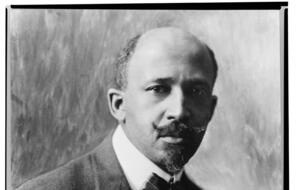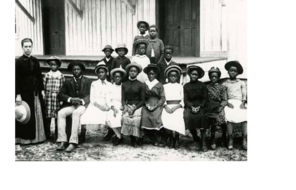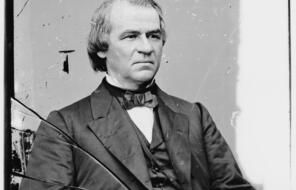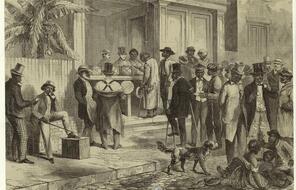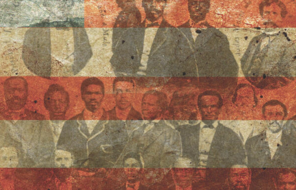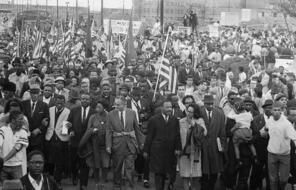The Scottsboro Affair
At a Glance
Language
English — USSubject
- History
- Racism
Please note that this reading contains dehumanizing language. We have chosen to include it in order to honestly communicate the harmful language of the time; however, dehumanizing language should not be spoken or read aloud during class.
We recommend that teachers review Strategies for Addressing Racist and Dehumanizing Language in Literature before using this material.
(Part 1)
In the 1930s, the story of the Scottsboro Boys, nine black teenagers accused of raping two white women on a train in Alabama, was reported in newspapers around the world. Many believe the high-profile series of events was an inspiration for the story of Tom Robinson in To Kill a Mockingbird: the Scottsboro Boys story involved similar accusations, and it occurred in the same time and state as the setting of the novel. The legal historian Michael Klarman describes the background and first part of the Scottsboro Affair this way:
The freight train left Chattanooga for Memphis at 10:20 a.m. on March 25, 1931. Thirty minutes after it had pulled out of Stevenson, Alabama, the stationmaster there saw a group of white hoboes walking along the train tracks back toward the station. They told him that several black youths had thrown them off the train after a fight. The stationmaster telephoned ahead to the next stop, Scottsboro, but the train had already passed through. It was finally stopped at Paint Rock, where a sheriff’s posse discovered nine black youngsters and, to everyone’s surprise, two young white women dressed in men’s overalls.
The nine blacks, known to history as the Scottsboro boys, ranged in age from thirteen to twenty. Five of them were from Georgia, though they claimed not to know one another. The other four did know one another; they were from Chattanooga, Tennessee. All of the nine were vagrants, and most of them were illiterate.
Twenty minutes after the train had been stopped, one of the women, Ruby Bates, called over a posse member and told him that she and her companion, Victoria Price, had been gang-raped by the blacks. The boys were immediately arrested and taken to the Scottsboro jail. As the sheriff sent the women to two local doctors for medical examinations, news of the alleged attacks spread. By day’s end, a crowd of several hundred people had gathered outside of the jail, demanding that the “niggers” be turned over for lynching. Sheriff M. L. Wann pleaded with the mob to allow the law to take its course and threatened to shoot anyone who rushed the jail. He also telephoned the governor for assistance, and by 11:00 p.m., twenty-five armed guardsmen were on their way to Scottsboro. To ensure the boys’ safety, they were moved to a sturdier jail in nearby Etowah. The local circuit judge, Alfred E. Hawkins, convened a special session of the grand jury to indict them; local citizens complained of the fiveday delay. One local newspaper remarked, “It is best for the county that these things be disposed of in a speedy manner as it gives no excuse for people taking the law into their own hands.”
A decade or two earlier, black men charged with raping white women under similar circumstances might well have been executed without trial. Lynchings in the South peaked in the late 1880s and early 1890s, when well over a hundred were reported annually and in some years over two hundred. Most lynchings occurred in response to allegations of crime—usually murder or rape—though occasionally the alleged “offense” was as minor as breach of racial etiquette or general uppityness. Prior to World War I, lynchings typically enjoyed the support of local communities; efforts to prosecute even known lynchers were rare, and convictions were virtually nonexistent.
By 1930, however, the number of reported lynchings had declined dramatically— from an average of 187.5 per year in the 1890s to 16.8 in the later years of the 1920s. This decline was attributable to many factors, including the possibility of federal anti-lynching legislation, the diminishing insularity of the South, more professional law enforcement, and better education. But the decline in lynchings probably also depended on their replacement with speedy trials that reliably produced guilty verdicts, death sentences, and rapid executions. Some jurisdictions actually enacted laws designed to prevent lynchings by providing for special terms of court to convene within days of alleged rapes and other incendiary crimes. In many instances, law enforcement officers explicitly promised would-be lynch mobs that black defendants would be quickly tried and executed if the mob desisted, and prosecutors appealed to juries to convict in order to reward mobs for good behavior and thus encourage similar restraint in the future.
In such cases, guilt or innocence usually mattered little. As one white southerner candidly remarked in 1933, “If a white woman is prepared to swear that a Negro either raped or attempted to rape her, we see to it that the Negro is executed.” Prevailing racial norms did not permit white jurors to believe a black man’s word over that of a white woman; prevailing gender norms did not allow defense counsel to closely interrogate a white woman about allegations involving sex. As one contemporary southern newspaper observed, the honor of a white woman was more important than the life of a black man. And because most southern white men believed that black males secretly lusted after “their” women, they generally found such rape allegations credible . . .
The Scottsboro defendants received precisely the sort of “justice” that often prevailed in trials that substituted for lynchings. Both local newspapers treated the defendants as obviously guilty even before the trial. The hometown newspaper of the alleged victims, the Huntsville Daily Times, “described the rapes as the most atrocious ever recorded in this part of the country, a wholesale debauching of society.” Judge Hawkins tried to assign all seven members of the Scottsboro bar to represent the defendants, but all but one of them declined. That one was Milo Moody, nearly seventy years old and later described by one investigator as “a doddering, extremely unreliable, senile individual who is losing whatever ability he once had.”
The trials began on April 6, just twelve days after the train incident. A crowd estimated at five to ten thousand gathered outside the courthouse, which was protected by national guardsmen wielding machine guns. Hawkins appointed as trial counsel a Tennessee lawyer, Stephen R. Roddy, who had been sent to Scottsboro by the defendants’ families to look after their interests. Roddy was an alcoholic, and one observer reported that “he could scarcely walk straight” that morning. When Roddy objected to his appointment on the grounds that he was unprepared and unfamiliar with Alabama law, Hawkins appointed Moody, the local septuagenarian, to assist him. Roddy was permitted less than half an hour with his clients before the trial began. Defense counsel moved for a change of venue based on the inflammatory newspaper coverage and the attempted lynching of the defendants. But Sheriff Wann now denied that the defendants had been threatened, and Judge Hawkins denied the motion.
The state sought the death penalty against eight of the nine defendants—all but the one who was identified as being only thirteen years old. The nine were tried in four groups, beginning with Clarence Norris and Charley Weems. Victoria Price was the main prosecution witness, and she testified that the black youths had thrown the white boys off the train and then gang-raped her and Bates. According to one secondhand account, Price testified “with such gusto, snap and wise-cracks, that the courtroom was often in a roar of laughter.”
Judge Hawkins blocked defense counsel’s efforts to elicit admissions that the women were prostitutes and that they had had sexual intercourse with their boyfriends the night before the train incident . . . . Testimony provided by the examining doctors raised serious doubts as to whether the girls had been raped . . . . In their testimony, the two women also provided inconsistent accounts of various details of the incident, such as whether they had spoken with the white boys on the train and how long the interracial fracas had lasted. One man present when the train was stopped testified that he had not heard Price make any rape allegations.
However, the admission by Norris on cross-examination that the women had been raped by all of the other eight defendants, though not by him, severely undercut his defense. (It later came out that Sheriff Wann had warned Norris that he would be killed if he did not admit that the girls had been raped.) Defense counsel prodded the illiterate and confused Norris to change his story, but he held firm. The defense called no witnesses and made no closing argument.
While the jury deliberated on the fate of Norris and Weems, the trial of Haywood Patterson began. When the first jury returned to the courtroom to announce guilty verdicts and death sentences, crowds in and out of the courthouse erupted with delight. According to defense lawyer Roddy, “[i]nstantly, a wild and thunderous roar went up from the audience and was heard by those in the Court House yard where thousands took up the demonstration and carried it on for fifteen or twenty minutes.” Even though Patterson’s jury heard this commotion, Judge Hawkins refused to declare a mistrial.
The prosecution’s case grew stronger with each trial, as previously unhelpful witnesses were dropped and the alleged victims improved their stories with each recounting. Within a five-minute span on the witness stand, Patterson contradicted himself as to whether he had seen the girls being raped or indeed had seen them on the train at all. Several of the other defendants also testified inconsistently. After less than twenty-five minutes of deliberation, the jury convicted Patterson and sentenced him to death.
Five of the defendants were prosecuted together in a third trial. The state’s case against them was even weaker because these defendants did not incriminate each other on cross-examination, the women were less certain in identifying them as the rapists, and one of the defendants was nearly blind while another had such a severe case of venereal disease that raping a woman would have been very difficult. The jury nonetheless returned five more death sentences. Judge Hawkins declared a mistrial in the case of the last defendant, Roy Wright, when the jury could not agree on whether to sentence the thirteen-year-old to life imprisonment or to death—a sentence the prosecution had not even sought. None of the four trials lasted more than a few hours. 1
(Part 2)
In November 1932, the US Supreme Court overturned the convictions, declaring that the defendants were not provided adequate counsel and sufficient time to prepare their case. This violated the “due process” clause of the Fourteenth Amendment. This clause reads:
No State shall make or enforce any law which shall abridge the privileges or immunities of citizens of the United States; nor shall any State deprive any person of life, liberty, or property, without due process of law; nor deny to any person within its jurisdiction the equal protection of the laws.
(Part 3)
In March 1933, the Scottsboro Boys were given new trials in Decatur, Alabama, one at a time. Haywood Patterson was tried first. High-profile New York lawyer Samuel Leibowitz agreed to be their defense lawyer. The case was reported in newspapers around the world. In his case, Leibowitz challenged Victoria Price’s version of events directly, angering many white Alabamians. He also called a physician as a witness, who explained that the physical examination of the girls at the time of the incident suggested that they were not raped. Finally, he surprised everyone by putting Ruby Bates on the stand (she had previously been missing), where she changed her testimony and claimed that the girls made up the charges to avoid being arrested for vagrancy. Patterson was found guilty anyway and sentenced to death. The judge postponed the other eight trials until public tension toward Leibowitz subsided. Then, in June, the judge set aside Patterson’s conviction, citing the overwhelming evidence that the charges were false, and he called for yet another new trial. In November and December of that year, Patterson was tried again, along with Clarence Norris, and both were convicted and sentenced to death. 2
(Part 4)
On April 1, 1935, the US Supreme Court overturned the new convictions because lawyers for the Scottsboro Boys had proven that Alabama intentionally excluded African Americans from sitting on any juries. This violated the equal protection of the laws guaranteed by the Fourteenth Amendment. This clause reads:
No State shall make or enforce any law which shall abridge the privileges or immunities of citizens of the United States; nor shall any State deprive any person of life, liberty, or property, without due process of law; nor deny to any person within its jurisdiction the equal protection of the laws.
(Part 5)
Following the 1935 US Supreme Court ruling, the Scottsboro Boys were each tried again on the charges of raping Victoria Price and Ruby Bates. They were convicted again and served more time in prison.
Scholar Michael Klarman maintains that the Supreme Court rulings in favor of the Scottsboro Boys probably saved their lives, yet he also points out that many white Alabamians responded to the rulings with greater animosity toward the defendants:
The more the Court intervened on their behalf, the more determined white Alabamians seemed to punish them. Thus, despite two Supreme Court rulings in their favor, the Scottsboro boys each served from five to twenty years in prison for crimes they did not commit. 3
The following is what happened to each of the nine Scottsboro Boys after 1935:
- Haywood Patterson was convicted of rape for the fourth time in 1936 and sentenced to 75 years in prison. He escaped from prison in Alabama but was convicted of a different crime in Michigan and died in prison there.
- Clarence Norris was convicted again of rape and sentenced to death. In 1938, the Alabama governor reduced his sentence to life in prison. He was paroled and released from prison in 1946 and pardoned by Alabama governor George Wallace in 1976.
- Andrew Wright was convicted of rape and sentenced to 99 years in prison. He was paroled in 1950.
- Charlie Weems was convicted of rape and sentenced to 105 years. He was paroled in 1943.
- Ozie Powell stabbed an officer while being transported between prisons in 1936. The officer shot him in the head in response, causing permanent brain damage. He was sentenced to 20 additional years in prison because of the attack, but his rape charges were eventually dropped. He was released from prison in 1946.
- In 1937, the state of Alabama dropped the charges against Willie Roberson, Olen Montgomery, Eugene Williams, and Roy Wright. 4
- 1Scottsboro,” Marquette Law Review 93, no. 2 (2009): 379–431, http://scholarship.law.marquette.edu/cgi/ viewcontent.cgi?article=4943&context=mulr
- 2Ibid.
- 3Michael J. Klarman, “Scottsboro,” Marquette Law Review 93, no. 2 (2009): 431.
- 4Compiled from Douglas Linder, “The Scottsboro Boys Trials: A Chronology,” from “Famous Trials,” project of University of Missouri-Kansas City School of Law (1999), accessed May 13, 2014, http://law2.umkc.edu/faculty/projects/FTrials/ scottsboro/SB_chron.html
How to Cite This Reading
Facing History & Ourselves, “The Scottsboro Affair,” last updated March 14, 2016.
This reading contains text not authored by Facing History & Ourselves. See footnotes for source information.







